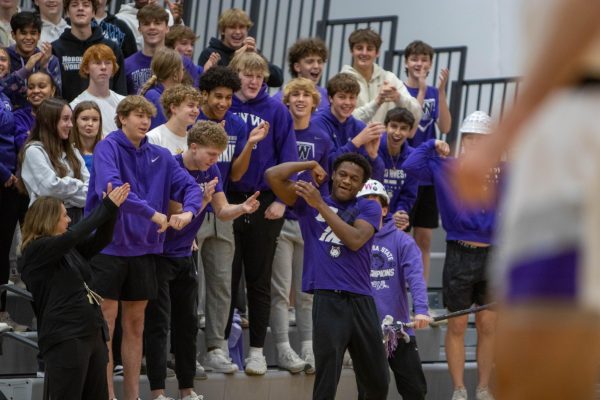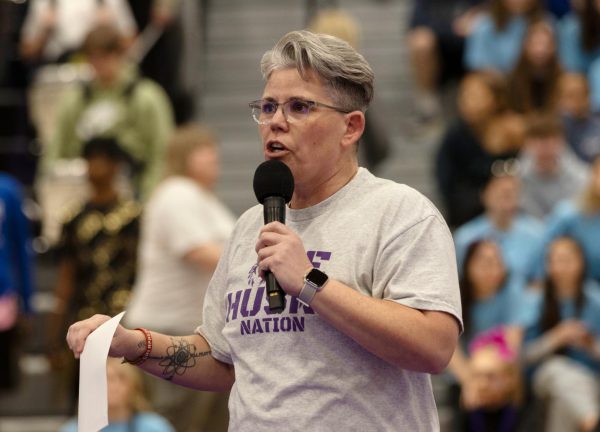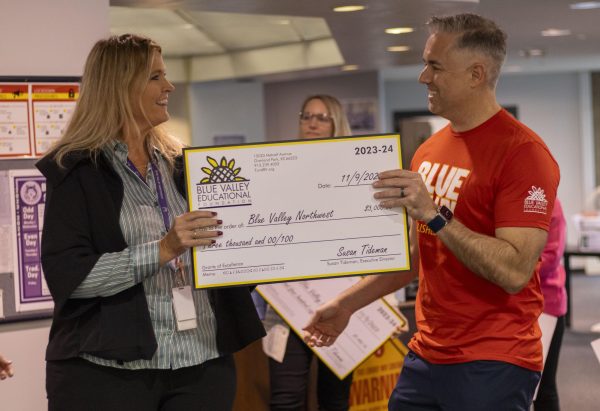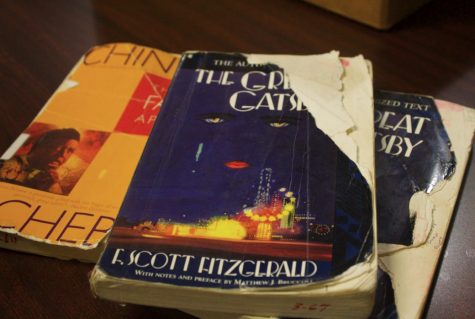Letters for success
Teachers face the trials and tribulations of writing recommendation letters for seniors applying to college.
With seniors scrambling to finish their college applications on time, students who are applying to universities and colleges require strong letters of recommendation that expand on their abilities beyond their test scores and transcripts.
English teacher Bill Smithyman and physics teacher Todd Petersen have taken on the task of writing recommendation letters – and more than a few. Smithyman is writing a total of 24 recommendation letters this year while Petersen is writing 21.
Senior Jackson Regan, who is applying to four colleges this year, requested Smithyman to write a letter of recommendation while senior Vibha Agarwal, who is applying to around 14 colleges, requested a recommendation letter from Petersen.
The students said they asked based on their relationship with the teachers.
Students are told every year by their counselors to request recommendation letters from their teachers at least a month or so in advance. Petersen said he usually receives a request from a student about a month in advance. Once he is reminded again a week before the deadline, he finishes the letter. Smithyman said he requires at least a three-week notice.
“I’m still looking to make it as personal as possible so it takes a while,” Smithyman said. “I’ve never procrastinated…It also allows me to say no to the kids who need it in three days. The kid who (requests a letter) three weeks ahead of time, that communicates importance; it communicates priorities.”
Smithyman said he turns down students if they request recommendation letters at the last minute. He also said he prioritizes his letters from student to student, often based on the prestige of the college the student is applying to.
“If I do (prioritize), it is because of the caliber of the letter needed,” Smithyman said. “If a kid is trying to go into Harvard, then I might give a little more attention (to the letter) than a kid who is just trying to get into K-State’s Honor College.”
Smithyman said the writing process for recommendation letters can include trying to tie in a student’s involvements outside of the classroom and outside of the school to give student’s the best chances of success in the enrollment process.
Regan said he made sure that when he requested a letter of recommendation from Smithyman to give him a detailed and helpful packet to aid him in the writing process.
“I gave them an entire sheet detailing exactly what their letter needed to cover,” Regan said. “I gave them the deadline when (the recommendation letter) was due…I also included a resume I created for myself.”
Petersen said he wrote Agarwal a recommendation letter prior to her college recommendation letter when Agarwal applied to a science program last summer. He said writing a recommendation letter for Agarwal was easier because he already had an idea of what he wanted to convey; however, he faced challenges writing her recommendation letter.
“It makes it harder because you want to do a good job for everyone you agreed to (write a recommendation letter for),” Petersen said, “but when it’s someone that you have a connection with like that, then you just want to make sure that it’s perfect and you’re choosing your words so carefully.”
Social studies teacher Matt Christensen has been teaching at BVNW for 16 years and said he wrote at least one recommendation letter yearly for most of his career. However, Christensen said within the last four years he wrote about eight to 10 recommendation letters in an average year.
“Students often times would be too late to let me know they needed me to (write a recommendation letter),” Christensen said. “My life is really busy and it was really difficult for me to find time to write a unique letter for that individual.”
As a result, Christensen said he would sometimes turn down students because he could not write a meaningful and strong recommendation letter simply because he did not have a close relationship with the students.
He said he decided to take a break this year from writing letters because the process is time-consuming and became stressful for him when students would fail to give him reasonable notice for writing letters.
“I’d like to go back to (writing letters),” Christensen said. “I really believe it’s an important thing to do to help students, I just need to find a better method for me to implement it. When you start (writing letters), it’s a part-time gig…this year I just had a lot going on and I wasn’t really feeling like I was effectively providing good letters of recommendation so I just took a break.”
Along with Christensen, both Petersen and Smithyman said they both intend on writing recommendation letters for students in the future.
“It would be hard for me to give (writing letters) up because I am always going to have those students that I have connected with and I have seen their potential and value,” Petersen said.
Smithyman said he appreciates the many thank you cards and small gifts he receives after writing students’ recommendations because it shows that the student understands the teachers have gone above and beyond to write a good letter.
Petersen said he writes recommendation letters simply as a way to give back to his students.
“I think what I get out of it is just my way of giving back to the students that have made my job enjoyable.” Petersen said. “I won’t say easier, because that’s not true, but I do what I do because I enjoy it, and I enjoy it because of the kind of students that like to learn.”

Senior Abdul Qaddour is a writer and the cartoonist for The Express and BVNWnews.com. This is his first year on staff, and he is also involved in football, wrestling, track and We The People. He likes drawing, writing, playing sports and eating. His favorite part of newspaper was getting a giant, homemade Reese's peanut butter cup from Emily.
















